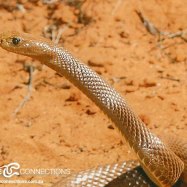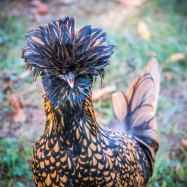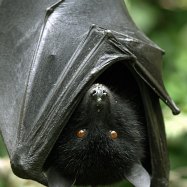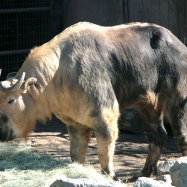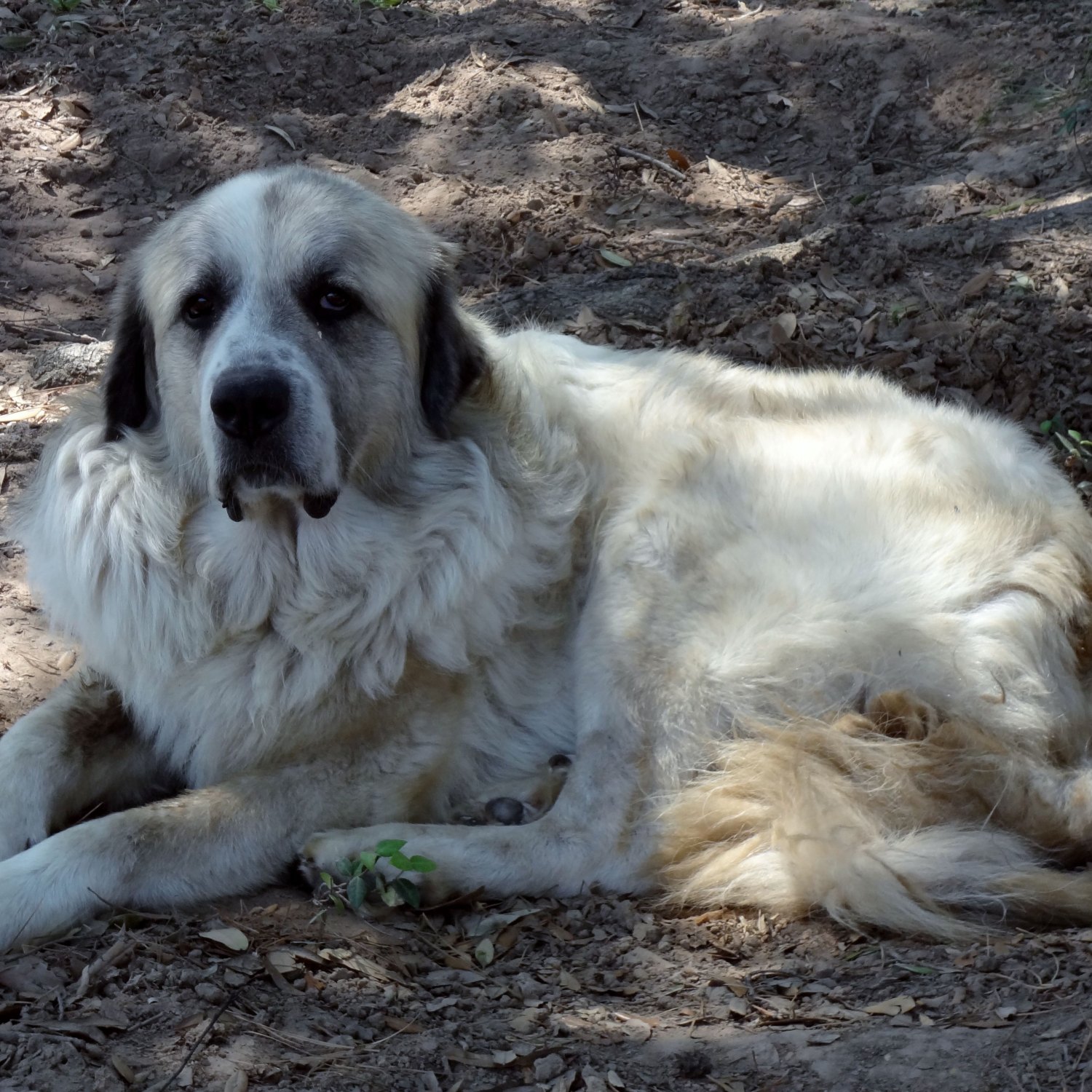
Great Pyrenees
25-32 inches
The Great Pyrenees is a majestic breed of dog that can reach a height of 25-32 inches. Part of the Canidae family, these large dogs have a worldwide presence and are well-known for their protective and loyal nature. With their thick white fur, they make great working and family pets. #GreatPyrenees #Canidae #DogBreeds
Animal Details Summary:
Common Name: Great Pyrenees
Kingdom: Animalia
Habitat: Mountains
The Majestic Great Pyrenees: A Creature of Character and Charm
The Great Pyrenees, scientifically known as Canis lupus familiaris, is a magnificent breed of dog that has captured the hearts of many for centuries. Also, known as the Pyrenean Mountain Dog, this gentle giant falls under the Kingdom of Animalia, the Phylum of Chordata, and the Class of Mammalia, making them one of the closest relatives to the wolves. They belong to the Order of Carnivora and the Family of Canidae, along with their wild cousins like wolves, foxes, and coyotes.Native to the mountains of Europe, particularly in the Pyrenees Mountains, the Great Pyrenees is known for its impressive size, fluffy white coat, and charming personality Great Pyrenees. They were traditionally bred as guardian dogs for livestock, and some even believe they were used to protect the French royals during their hunting expeditions. Today, they have become a popular family pet, known for their gentle and loyal nature.
The Great Pyrenees' Habitat and Feeding Method
As their name suggests, the Great Pyrenees are mainly found in mountainous regions and are known to thrive in colder climates. They have a thick double coat that provides insulation and protection during harsh weather conditions, making them well-suited for their habitat. Despite their size and thick fur, Great Pyrenees are sensitive to heat and prefer cooler temperatures.The Great Pyrenees is a carnivorous animal, meaning their primary source of nutrition comes from consuming meat. As a guardian dog, their diet typically includes high-quality meat such as beef, chicken, and lamb. They also enjoy a diet rich in fruits and vegetables, which provide essential vitamins and minerals. However, owners need to monitor their food intake, as they can easily become overweight due to their sedentary lifestyle and large appetite Golden Trout.
The Great Pyrenees' Geographical Distribution and Country of Origin
The Great Pyrenees is one of the oldest dog breeds, with evidence dating back to 3000 BC. They were first mentioned in ancient writings by the Greeks and Romans as they were fascinated by their characteristics and abilities. Originating from the Pyrenees Mountains in France, they were bred to be stock guardian dogs and were popularized across Europe in the following centuries.Today, the Great Pyrenees can be found in many parts of the world, including Europe and the United States. They have managed to maintain their popularity and have even become the national dog of France. These gentle giants have proven their worth and have made their way into the hearts and homes of many households worldwide.
The Great Pyrenees' Physical Appearance and Body Shape
One of the most striking features of the Great Pyrenees is their size. They are a large breed, with an average height of 25-32 inches at the shoulder and weighing between 85-100 pounds. They have a sturdy, muscular build and a broad, deep chest, giving them an incredible amount of strength and stability. However, despite their large size, they have a graceful and elegant gait, making them look regal and majestic.The Great Pyrenees has a distinctive white coat, which is considered their classic and most recognizable characteristic. Their coat is thick, double-layered, and weather-resistant, providing them protection from extreme weather conditions. They also have a mane of fur around their neck, which is more prominent in males than in females. Its purpose is to protect their heads and necks from potential predators, giving them an added layer of defense as guardian dogs.
The Great Pyrenees' Personality and Temperament
The Great Pyrenees is known for its calm and intelligent nature. Bred as guardians, they are naturally protective and make excellent watch or guard dogs. However, they are not aggressive and only display their guarding instincts when necessary. They are also known for their independent and sometimes stubborn nature, making them challenging to train. But with consistent training and a firm but gentle hand, they can become obedient and loyal companions.Their gentle and affectionate nature makes them ideal family dogs, particularly for families with children. They are known to be patient and tolerant, making them excellent playmates for kids. However, due to their size, it is essential to supervise any interactions between small children and the Great Pyrenees to avoid any accidents. They also get along well with other pets, particularly those they have been raised with from a young age.
The Great Pyrenees' Life Expectancy and Common Health Concerns
On average, the Great Pyrenees has a life expectancy of 10-12 years. Like all dog breeds, they are prone to certain health conditions, mainly due to their large size. Some common health issues associated with the Great Pyrenees include hip dysplasia, bloat, and eye disorders such as cataracts and progressive retinal atrophy.To ensure a healthy and happy Great Pyrenees, regular vet check-ups, a nutritious diet, and proper exercise are crucial. They require daily exercise, such as long walks and playtime, to keep them mentally and physically stimulated. They also need plenty of space to roam around, so a large yard or a spacious home is ideal for this breed.
In Conclusion
The Great Pyrenees is undoubtedly a breed of character, charm, and beauty. They have proven themselves to be excellent guardians, loyal companions, and loving family dogs. Their majestic appearance, calm demeanor, and gentle nature make them highly sought after by dog lovers. And with proper training, care, and love, the Great Pyrenees can become your most devoted and faithful friend. So, for those looking to add a gentle and affectionate giant to their lives, the Great Pyrenees may be just the dog for you.

Great Pyrenees
Animal Details Great Pyrenees - Scientific Name: Canis lupus familiaris
- Category: Animals G
- Scientific Name: Canis lupus familiaris
- Common Name: Great Pyrenees
- Kingdom: Animalia
- Phylum: Chordata
- Class: Mammalia
- Order: Carnivora
- Family: Canidae
- Habitat: Mountains
- Feeding Method: Carnivore
- Geographical Distribution: Europe, United States
- Country of Origin: France
- Location: Worldwide
- Animal Coloration: White
- Body Shape: Large
- Length: 25-32 inches
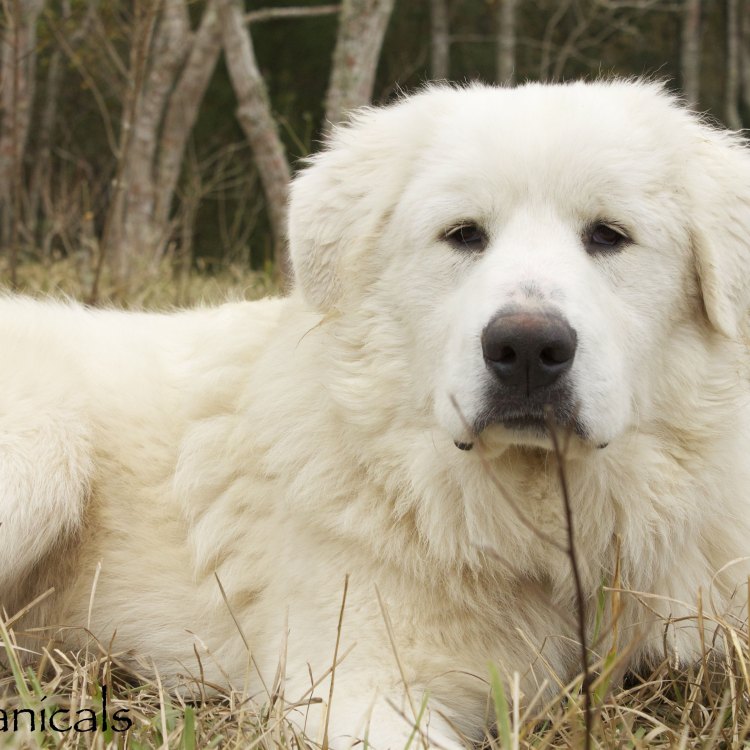
Great Pyrenees
- Adult Size: Large
- Average Lifespan: 10-12 years
- Reproduction: Sexual
- Reproductive Behavior: Mating season occurs once a year, usually in the winter
- Sound or Call: Bark
- Migration Pattern: Non-migratory
- Social Groups: Pack
- Behavior: Protective, gentle, loyal
- Threats: Hip dysplasia, bloat, heart problems
- Conservation Status: Not listed
- Impact on Ecosystem: Not significant
- Human Use: Companion, livestock guardian
- Distinctive Features: Thick double coat, strong and muscular build
- Interesting Facts: Great Pyrenees are known for their guarding instincts and their ability to protect livestock.
- Predator: No significant natural predators
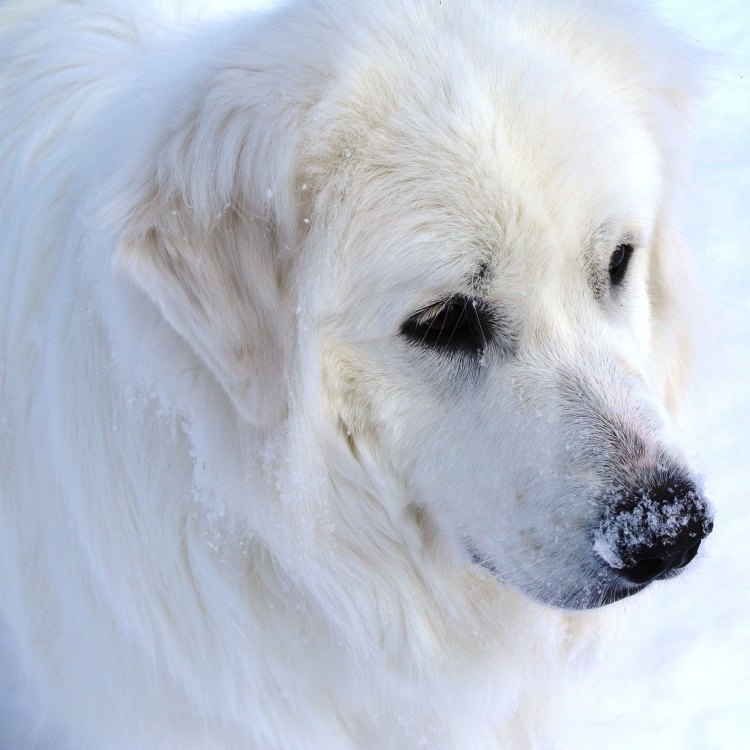
Canis lupus familiaris
The Magnificent Great Pyrenees: A Loyal Companion and Livestock Guardian
As you enter a farm or a ranch, you may often come across a magnificent, large and gentle creature with a thick white coat of fur, proudly surveying its surroundings. This majestic dog is none other than the Great Pyrenees, a breed known for its protective and loyal nature. With an average lifespan of 10-12 years and weighing between 85-115 pounds, the Great Pyrenees is considered to be a large breed that captivates the hearts of dog lovers worldwide.The Great Pyrenees, also known as Pyrenean Mountain Dog, takes its name from the Pyrenees Mountains, which forms the border between France and Spain PeaceOfAnimals.Com. This breed has been around for thousands of years, primarily identified as a livestock guardian and later as a companion to humans. Let's dive deeper into the unique features and characteristics of this magnificent species.
The Life of a Great Pyrenees
The Great Pyrenees is a sexual reproducing breed, with the mating season occurring once a year, typically in the winter. During this time, male Great Pyrenees tend to become more assertive and aggressive. Once pregnant, the female Great Pyrenees carries the pups for an average period of 60-70 days and typically gives birth to 6-10 puppies.When it comes to their living patterns, Great Pyrenees are non-migratory animals, meaning they do not travel long distances. They prefer to stay in one place and mark their territory, which is usually the farm or ranch they protect. These dogs are social animals and form packs with other dogs, making them excellent companions to their human owners and other animals on the farm.
Behavior and Guardianship
One of the most astonishing qualities of the Great Pyrenees is its protective behavior Gypsy Moth. This breed has been known to guard large herds of livestock, such as sheep, goats, and even cattle. Their natural instincts drive them to protect their territory and their owners from potential predators.Great Pyrenees are gentle by nature and have a protective yet affectionate demeanor towards their families. They are known to get along well with children, making them great family dogs. However, due to their protective instincts, they may not always be the most obedient pets. It is essential to provide proper training and socialization to ensure they do not show aggression towards strangers.
Threats to the Great Pyrenees
Like all other breeds, the Great Pyrenees is susceptible to certain health conditions. The most common health concerns for this breed are hip dysplasia, bloat, and heart problems. Pet owners must take their Great Pyrenees for regular check-ups and keep an eye out for any changes in their dog's behavior to catch these problems early on.It is also crucial to provide proper nutrition and exercise to maintain the Great Pyrenees' strong and muscular build. A well-balanced diet and regular physical activity can help prevent health issues and ensure a long and healthy life for your furry companion.
Human Uses and Interesting Facts
The Great Pyrenees is a versatile breed, known for its unique characteristics and abilities. Throughout history, they have been used as companions, guardians, and livestock guardians. They were especially popular among French nobles in the 17th century and were known to be great protectors of castles.However, their primary use was as a livestock guardian, a task that they have mastered over thousands of years. They have a natural instinct to protect their herd, often staying with them for extended periods without human supervision. This quality makes them a valuable asset for farmers and ranchers in protecting their livestock from predators like coyotes and wolves.
One of the most interesting facts about Great Pyrenees is their ability to think independently. Unlike other breeds, they do not wait for instructions from their owners when it comes to protecting their herd. They have an innate sense of what needs to be done and act accordingly, making them exceptional and admirable creatures.
The Great Pyrenees in the Ecosystem
The Great Pyrenees is not listed as an endangered or threatened species, and their presence does not have a significant impact on the ecosystem. They usually do not hunt or prey on other animals and are solely focused on protecting their environment. Therefore, this breed does not pose a threat to the natural balance of the ecosystem.The Great Pyrenees as a Guardian and Companion
The Great Pyrenees is truly a dog like no other. Their distinctive features, such as their thick double coat and strong build, make them stand out among other breeds. But it is their protective and gentle nature that has captured the hearts of many people worldwide.Whether as a guardian or a companion, the Great Pyrenees has proven to be a loyal and trustworthy partner. Their love and loyalty towards their owners and their herds are unmatched, making them an essential part of many farm and ranch families. So, if you ever come across a Great Pyrenees, remember to appreciate and admire this magnificent creature for its unique qualities and its tireless guardianship.
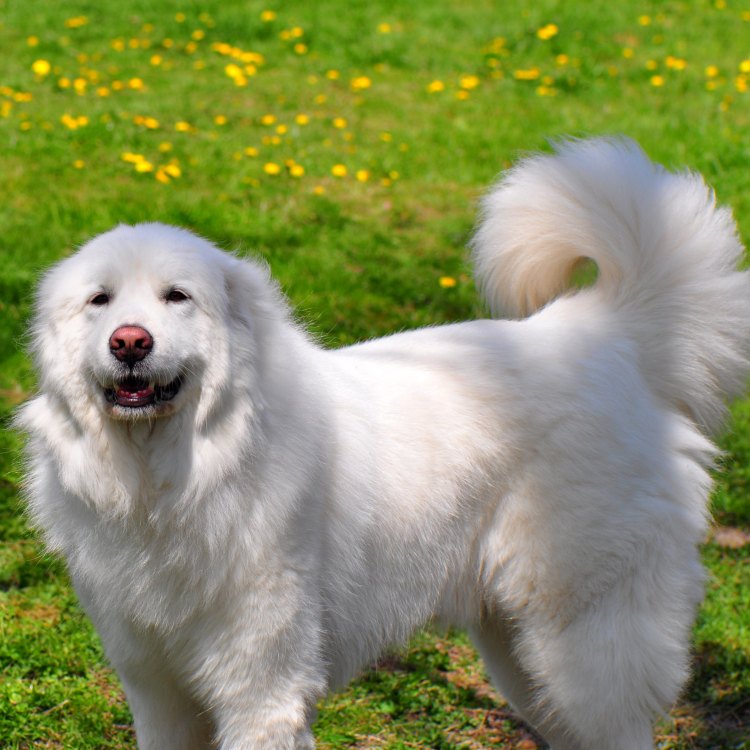
The Majestic Great Pyrenees: A Creature of Character and Charm
Disclaimer: The content provided is for informational purposes only. We cannot guarantee the accuracy of the information on this page 100%. All information provided here may change without prior notice.

